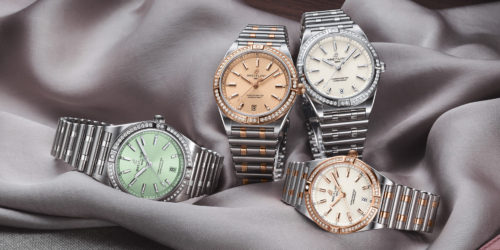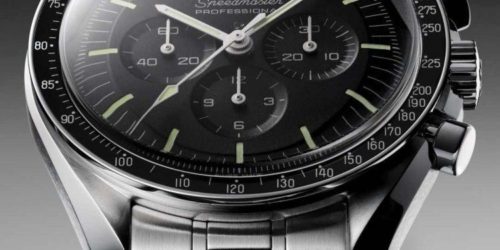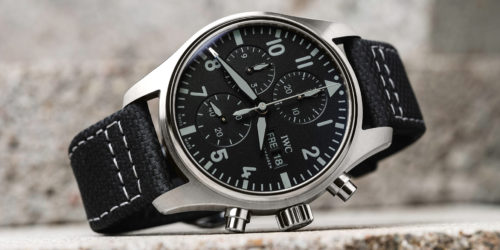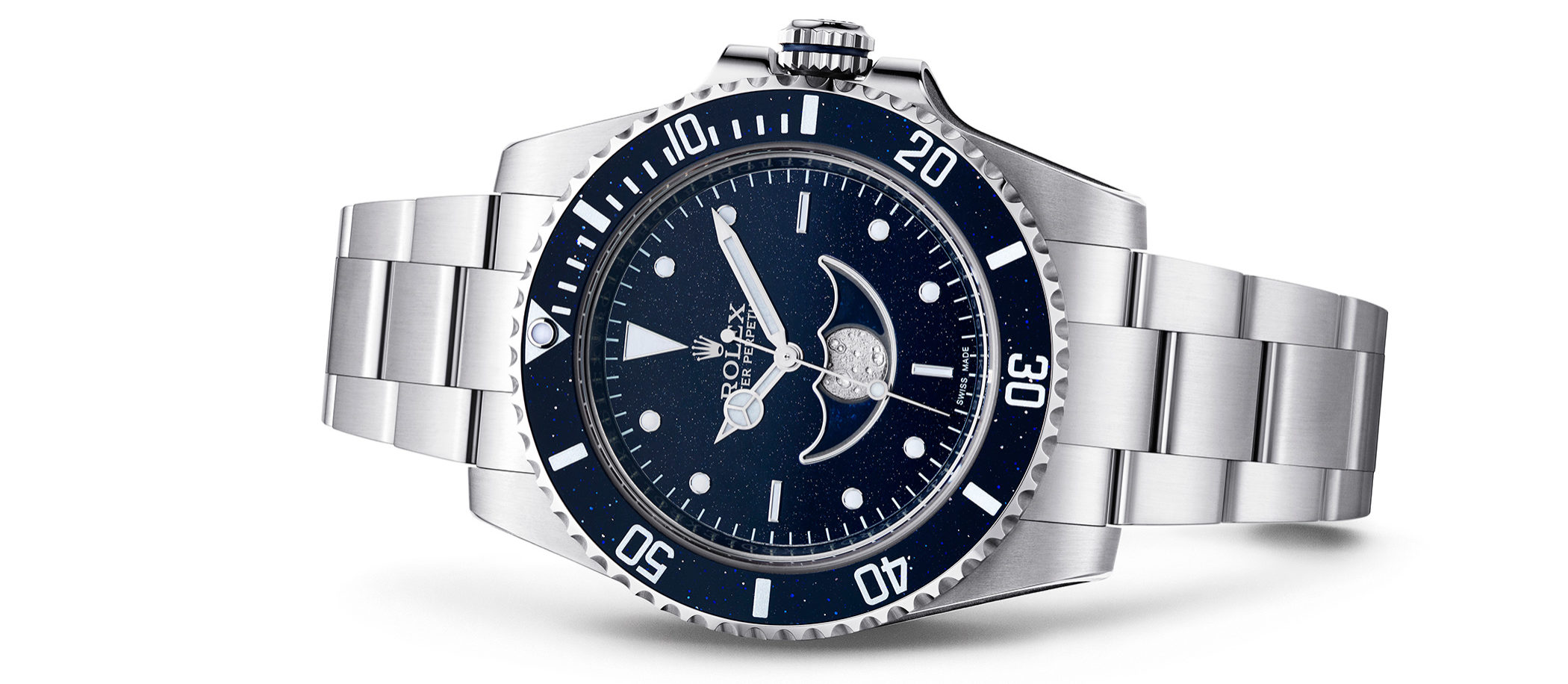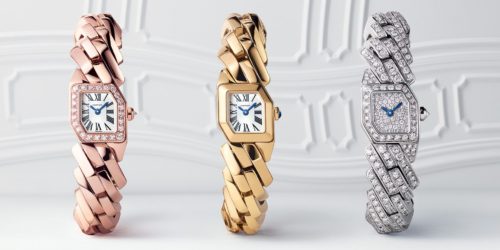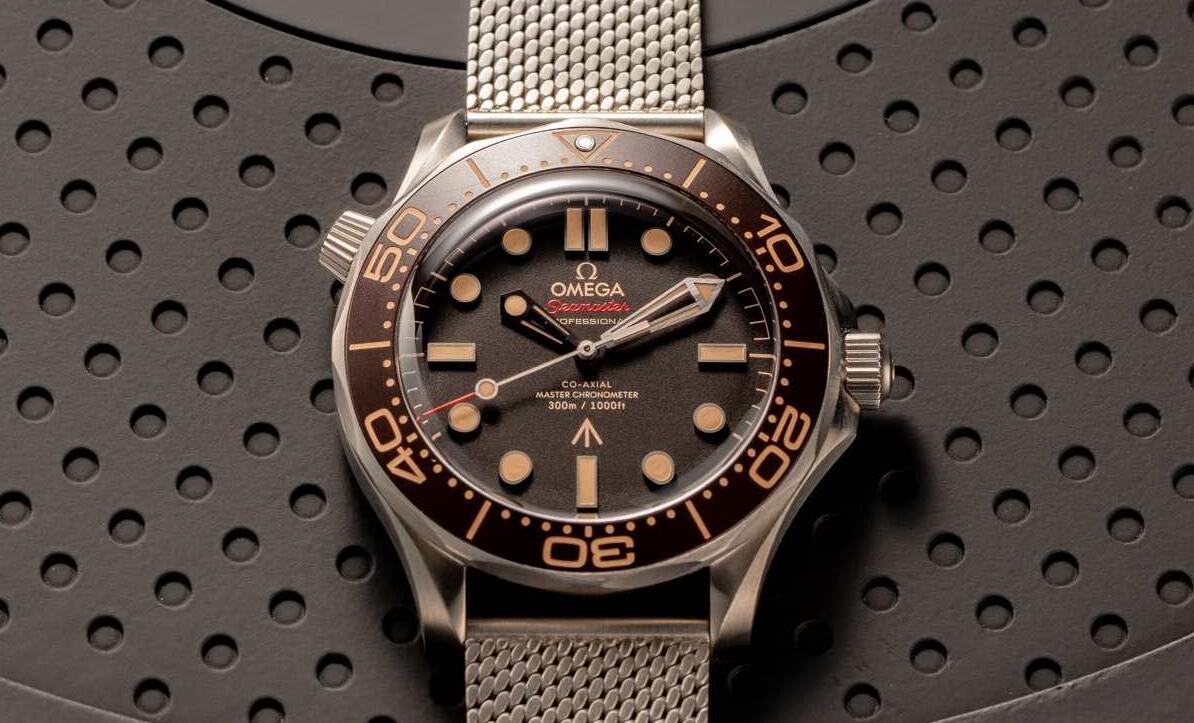Replica Hublot Techframe Ferrari 70 years Tourbillon Chronograph
Seventy years of Ferrari, celebrated by the most powerful front (mid) engine 12-cylinder ever, the 812 Superfast, worthy heir of the Daytona which represents the most coveted front engine GT of all time and a partnership, the one with Replica Hublot, which continues unstoppable and progressively moves from co-branding to joint development of a watch for collectors. This is the meaning of the Hublot Techframe Ferrari 70 years Tourbillon Chronograph.
The Ferrari Style Center is an internal structure of the company, which has completely replaced the historic partnership with Pininfarina, whose coat of arms has disappeared from the side of the cars. Led by Flavio Manzoni, it is now fully integrated with product development. It is precisely thanks to the pencil of Flavio Manzoni and his team that the genesis of the Hublot Techframe Ferrari 70 years Tourbillon Chronograph was achieved.
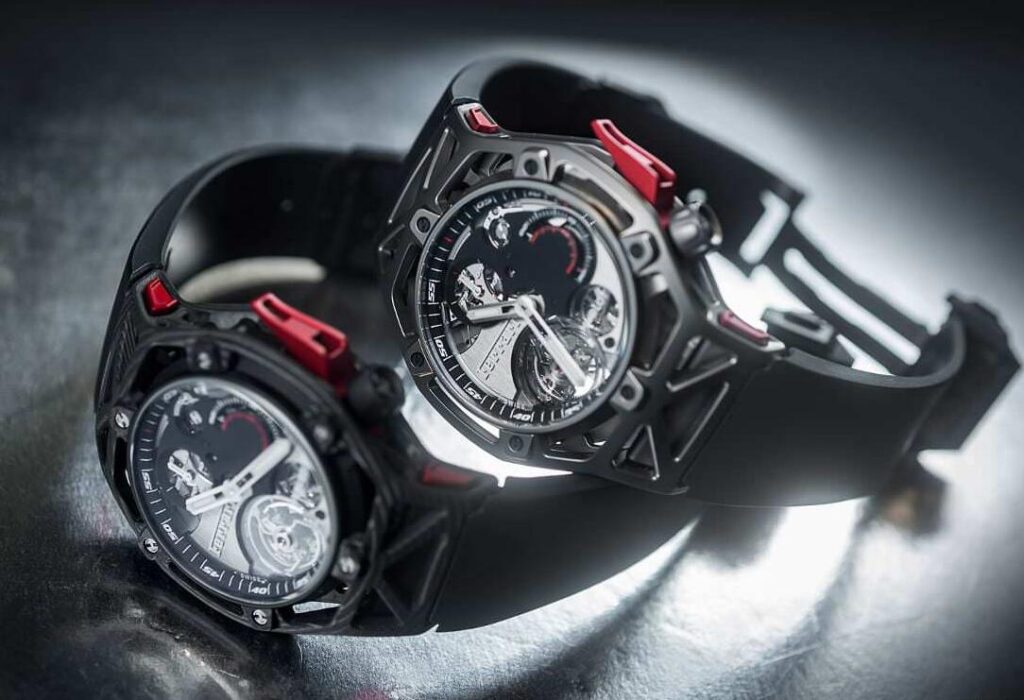
Hublot Techframe Ferrari 70 years Tourbillon Chronograph represents a new chapter for Hublot, a collection in which a case with a trellis structure, hollowed out and lightened (but reinforced) as would be done with a monocoque chassis of a racing car, replaces the layer structure typical of the Hublot world and the Big Bang. A structure made of titanium, Carbon PEEK or King Gold, the gold alloy patented years ago in Hublot’s metallurgy department in Nyon. Even with an incredible construction complexity and even considering the type of caliber mounted, a chronograph with a one-minute Tourbillon, the aesthetics of the Hublot Techframe Ferrari 70 years Tourbillon Chronograph seems to bring to mind the original language of Hublot, almost a return to the origins and back when the brand was still under Italian ownership.
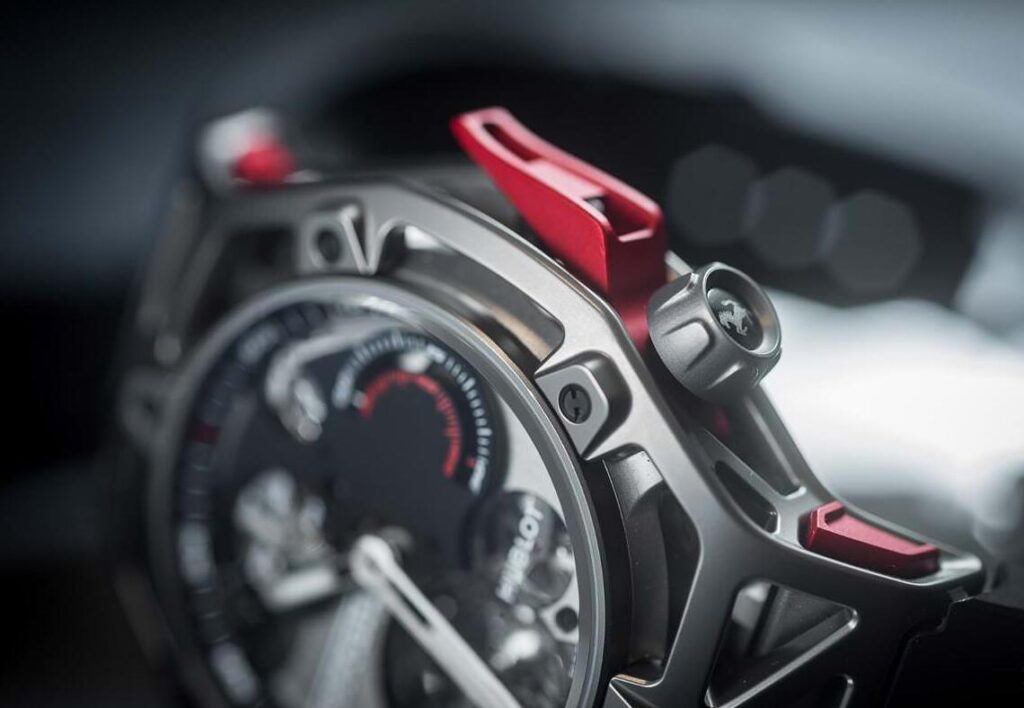
Especially in its titanium and PEEK versions (a composite made with very long fibers of carbon fiber), the Hublot Techframe Ferrari 70 years Tourbillon Chronograph exudes high technology: not only the main elements but also small components such as screws (strictly H) are made of the same material as the case. All titanium parts are micro shot peened. I am not aware of the specific process used by Hublot (nor of the titanium alloy used) but more generally the shot-peening or shot peening process is a cold working process which consists of hitting the surface with a jet of high-pressure microspheres. speed. The impact between the microspheres and the titanium surface locally plasticizes the titanium surface, inducing residual compressive stresses. Tensions that contribute to slowing down or eliminating the formation of cracks and any brittle breakage of the material following, for example, an impact.
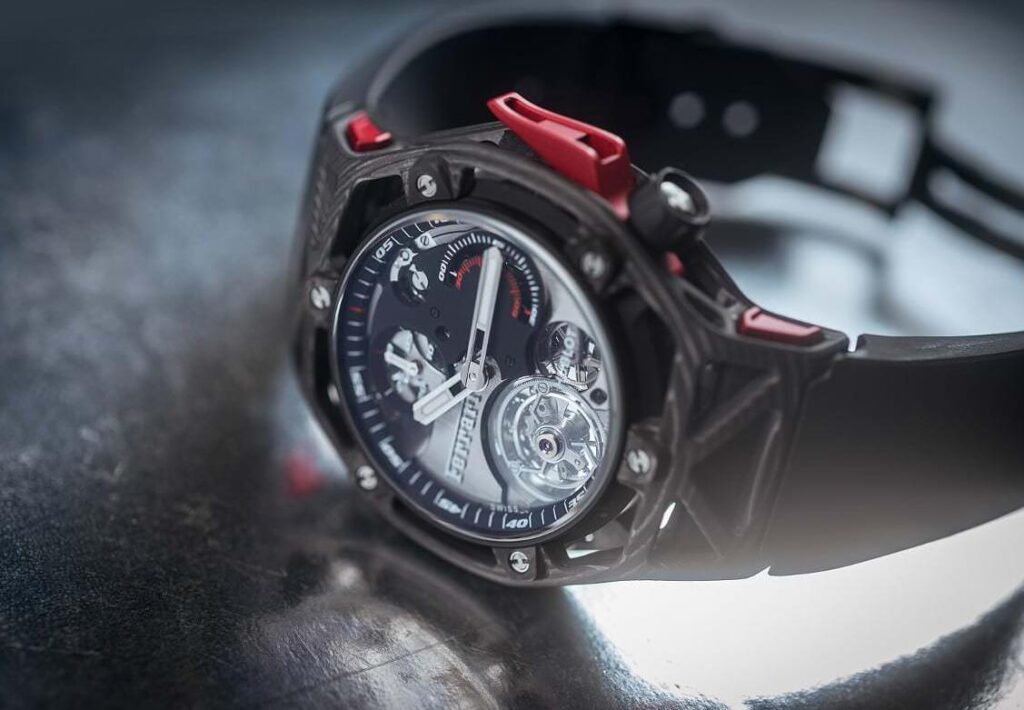
The case of a Hublot Techframe Ferrari 70 years Tourbillon Chronograph is extremely light albeit large (45mm in diameter) and thick (14.80mm). The trellis case is completed by the quick-release buttons on the very elongated lugs, which allow for quick replacement of the rubber strap, and by the beautiful single-button chronograph lever (start, stop, chronograph reset), all painted P485 Ferrari red, the pantone that identifies Ferrari red (patented and registered) throughout the world. The base of this small lever, completely slotted or “unloaded” to reduce its weight, is hinged under the shaft of the winding crown, mounted at 4 o’clock, which is engraved with the symbol of the Prancing Horse.
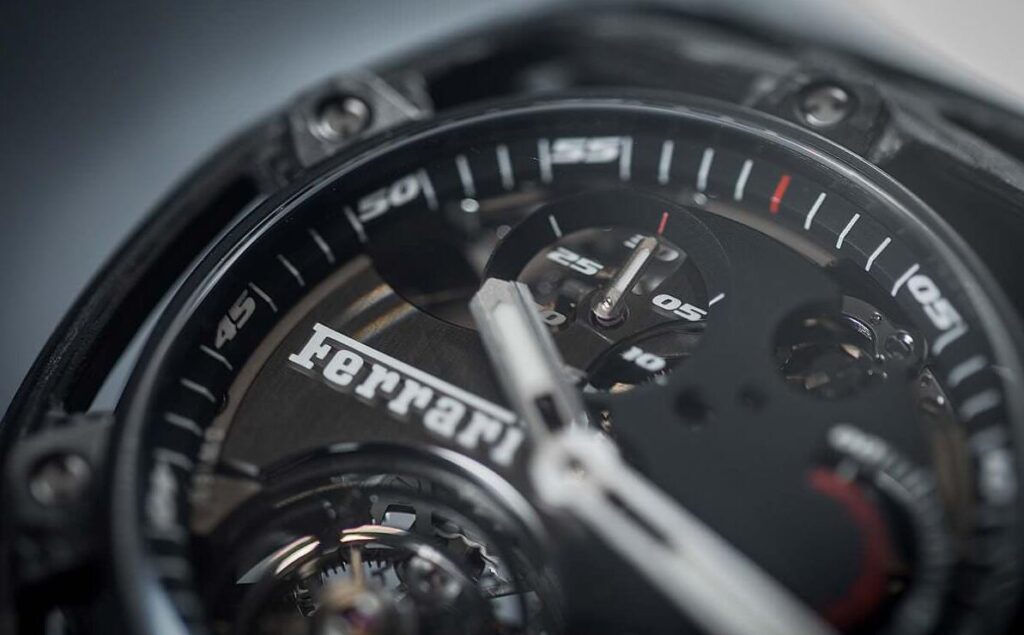
The Ferrari writing is instead applied on the dial at 9 o’clock, the only completely free part of a dial which from 11 o’clock to 8 o’clock contains respectively: the chrono minutes, the chrono seconds (double counter for the half seconds), arranged in a elevated structure on the dial ending with the Tourbillon. The Tourbillon has the appearance of a flying tourbillon, because the upper bridge is actually a thin sapphire crystal that rotates along with the tourbillon, offering a second rotation pin to its axis. A simply brilliant idea to combine visual lightness and the (almost) presence of a double support. The minute track uses the same Arabic numerals used by Ferrari on its digital dials and the Hublot logo is located at five o’clock laser-printed on the sapphire crystal, as if to leave intact the image of a chronograph that respects the aesthetic standards of a Hublot, whose pencil, however, was that of the Ferrari Style Center.
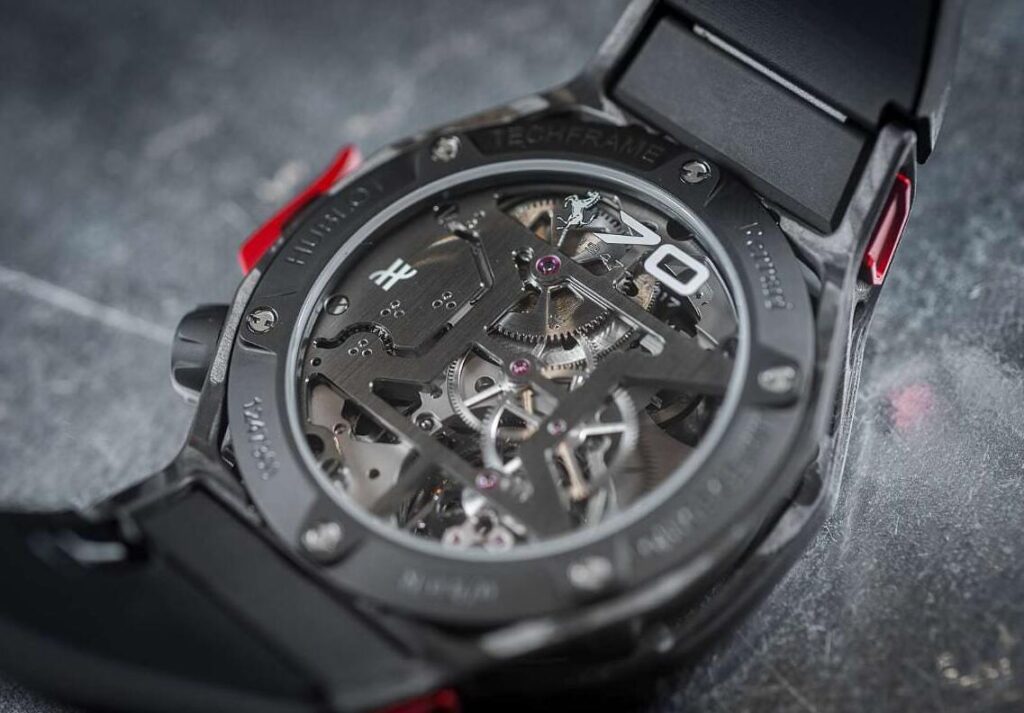
Among the characteristics of the manually wound HUB6311 calibre, treated with anthracite ruthenium on the bridges, the excellent power reserve of 5 days deserves to be mentioned, I imagine without considering the use of the chronograph, whose column wheel is visible in a window thirteen hours, and the relatively small number of components, 253, if we consider the presence of tourbillon and chrono. Hublot Techframe Ferrari 70 years Tourbillon Chronograph will be made in just 210 examples, or 70 for each of the three available options, and it is conceivable that there will be a competition among customers for those who drive a Ferrari or a fast track for historic collectors of vintage cars. little horse.
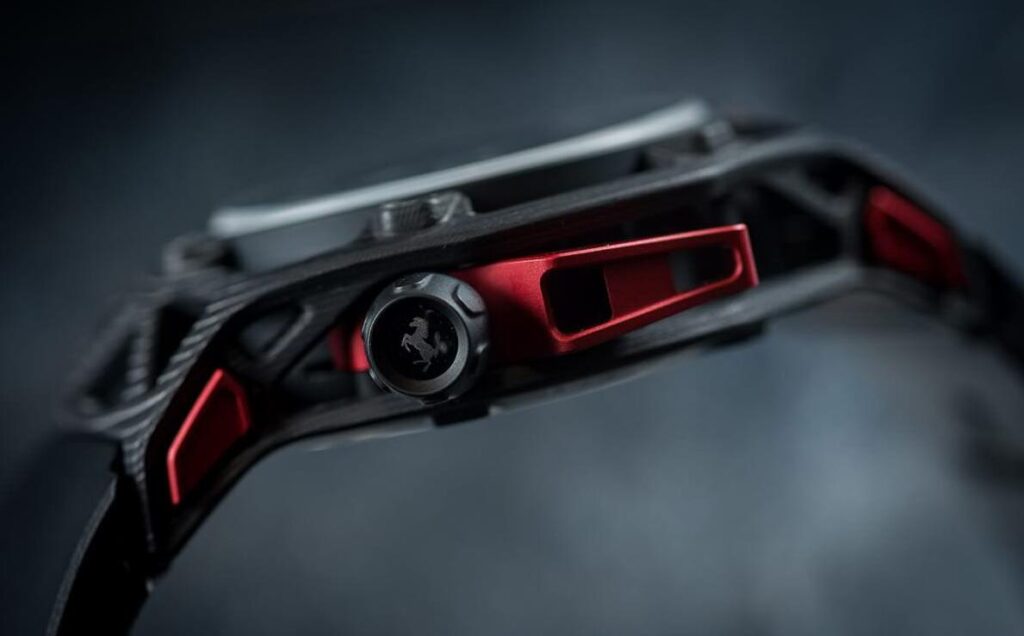
The titanium version costs 127,000 dollars, 137,000 for the PEEK version and 158,000 for the King Gold version. An object for a few, especially for connoisseurs who love automotive engineering and a design that perhaps opens a new chapter in the design of HUBLOT which has shown with the Ferrari Unico, recently presented, that it has reached considerable stylistic maturity and is starting to slowly explore new territories. As a great car enthusiast, engineer and watch lover, the Hublot Techframe Ferrari 70 years Tourbillon Chronograph simply drives me crazy and my hope is that Hublot will hurry to translate these same concepts into more accessible collections.
